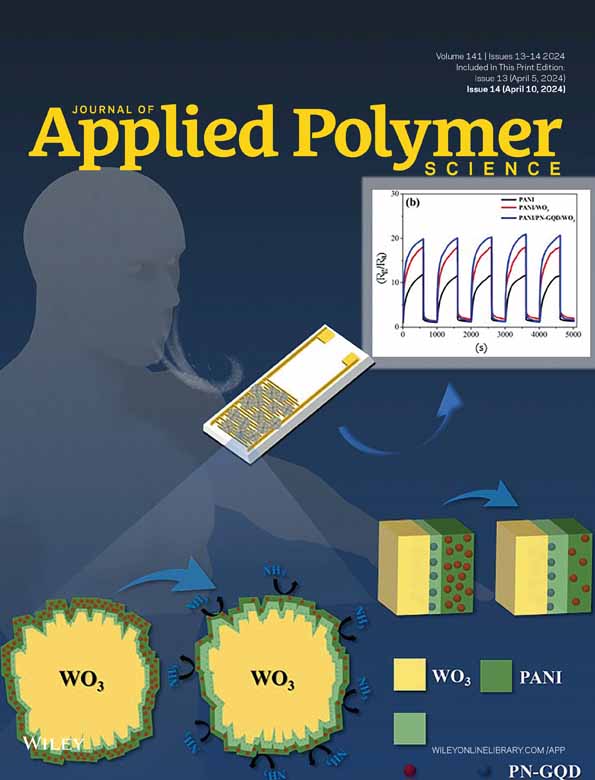A novel method for exploring the wear resistance characteristics of ethylene propylene diene monomers-polyamide elastomers with nano-graphite
Abstract
Hansen solubility parameter theory and rheological laws were employed to investigate the microscopic cross-linked network structure of the wear-resistant elastomer based on ethylene propylene diene monomers (EPDM)-polyamide elastomers (PAE)/graphite. With the condition of the same carbon black content, the wear volume of EPDM-PAE increased after added wax powder and decreased by adding five percent graphite. The role of microscopic cross-linked network on the wear-resistant properties was specifically characterized by a highly linear synergistic relationship between wear volume and cross-link density. The motion ability of micro chain segments has been characterized by the frequency sweep and the influence of the filler network has been represented by the strain sweep. Scanning electron microscope was used to characterize the micro filling structure, while stereomicroscope view was used to explore the wear interface. It was noteworthy that the graphite network layer formed on the abrasive surface on top of the abrasive grit wear transformed the wear mechanism into composite wear. This work was an innovative perspective to study rubber-plastic/solid lubricant-based wear-resistant elastomers, based on microscopic network structures, which could help to obtain new wear-resistant elastomers with specific properties.
CONFLICT OF INTEREST STATEMENT
The authors declare no conflicts of interest.
Open Research
DATA AVAILABILITY STATEMENT
The data that support the findings of this study are available on request from the corresponding author.




